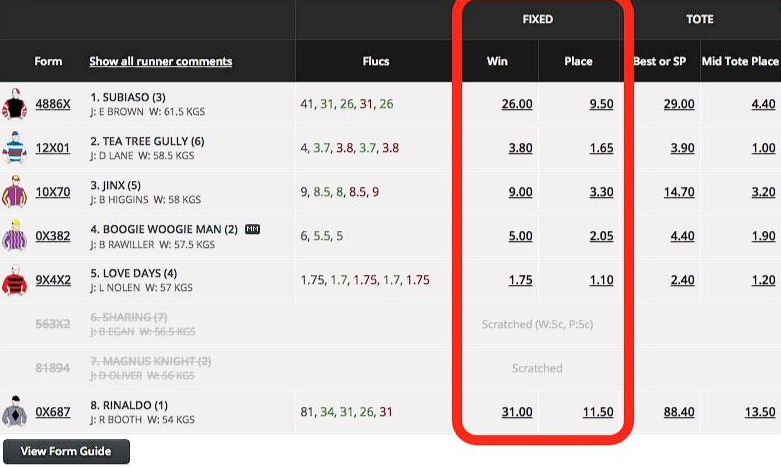Understanding Betting Odds
Betting odds are fundamental to sports betting, as they indicate the likelihood of an outcome and determine the potential payout. Whether you are a seasoned bettor or new to the world of sports betting, understanding how odds work is crucial for making informed decisions. This comprehensive guide will explain the different types of betting odds, how to read them, and their significance in sports betting.
Types of Betting Odds
Betting odds are presented in three main formats: fractional, decimal, and American (moneyline). Each format serves the same purpose but is displayed differently.
1. Fractional Odds
Fractional odds are popular in the UK and Ireland and are often used in horse racing. They are expressed as a fraction, such as 7/2 or 5/1.
- Interpretation: The fraction represents the profit relative to the stake. For example, odds of 7/2 mean that for every $2 bet, the profit will be $7.
- Calculation: To calculate the total payout, add the profit to the original stake. For 7/2 odds, a $2 bet would yield a total payout of $9 ($7 profit + $2 stake).
2. Decimal Odds
Decimal odds are commonly used in Europe, Canada, and Australia. They are expressed as a decimal number, such as 2.50 or 3.00.
- Interpretation: The decimal number represents the total payout, including the original stake. For example, odds of 2.50 mean that a $10 bet would return $25 ($15 profit + $10 stake).
- Calculation: To calculate the profit, subtract the original stake from the total payout. For 2.50 odds, a $10 bet would yield a $15 profit.
3. American Odds (Moneyline)
American odds are popular in the United States and are expressed as positive or negative numbers, such as +150 or -200.
- Interpretation: Positive odds indicate the underdog and show the profit for a $100 bet. Negative odds indicate the favorite and show the amount needed to bet to win $100.
- Calculation: For positive odds, the number represents the profit on a $100 bet. For negative odds, the number represents the amount needed to bet to win $100.

Reading and Interpreting Betting Odds
Understanding how to read betting odds is essential for making informed bets. Here’s a step-by-step guide to interpreting different odds formats.
Fractional Odds
- Identify the Fraction: Look at the fraction, such as 7/2.
- Determine the Profit: The numerator (7) is the profit, and the denominator (2) is the stake.
- Calculate the Total Payout: Add the profit to the stake to get the total payout. For 7/2 odds, a $2 bet yields a $9 payout.
Decimal Odds
- Identify the Decimal: Look at the decimal number, such as 2.50.
- Determine the Total Payout: Multiply the decimal by the stake to get the total payout. For 2.50 odds, a $10 bet yields a $25 payout.
- Calculate the Profit: Subtract the original stake from the total payout to get the profit. For 2.50 odds, a $10 bet yields a $15 profit.
American Odds
- Identify the Sign: Look at the sign (+ or -) in front of the number.
- Determine the Profit or Stake: For positive odds, the number is the profit on a $100 bet. For negative odds, the number is the amount needed to bet to win $100.
- Calculate the Payout: For positive odds, multiply the odds by the stake divided by 100. For negative odds, divide the stake by the odds multiplied by 100.
Implied Probability and Value Betting
Betting odds also imply the probability of an outcome, which is known as implied probability. Understanding implied probability can help you identify value bets.
Implied Probability
- Definition: Implied probability is the likelihood of an outcome suggested by the odds. It is calculated differently for each odds format.
- Calculation:
- Fractional Odds: Implied probability = Denominator / (Numerator + Denominator)
- Decimal Odds: Implied probability = 1 / Decimal Odds
- American Odds: Implied probability = 100 / (Odds + 100) for positive odds and Odds / (Odds – 100) for negative odds.
Value Betting
- Definition: Value betting involves identifying bets where the implied probability is lower than the true probability of an outcome.
- Strategy: Look for odds that offer better value than the actual likelihood of an event. This can increase your long-term profits.
Factors Affecting Betting Odds
Several factors can influence betting odds, including market conditions, bookmaker margins, and public perception.
Market Conditions
- Supply and Demand: The amount of money bet on each outcome can affect the odds. Bookmakers adjust odds based on the volume of bets to balance their liability.
- Injuries and Form: Injuries, team form, and other external factors can influence odds. For example, an injury to a key player can significantly change the odds.
Bookmaker Margins
- Definition: Bookmaker margins are the profit built into the odds. They ensure the bookmaker makes money regardless of the outcome.
- Impact: Higher margins mean lower payouts for bettors. Look for bookmakers with lower margins to maximize your profits.
Public Perception
- Influence: Public opinion and betting trends can influence odds. Bookmakers may adjust odds based on the perceived likelihood of an outcome to attract more bets.
- Strategy: Be aware of public bias and look for opportunities where the odds may be inflated due to popular opinion.
Conclusion
Understanding betting odds is essential for successful sports betting. By familiarizing yourself with fractional, decimal, and American odds, you can make informed decisions and identify value bets. Always consider the implied probability, bookmaker margins, and market conditions when evaluating odds. With this knowledge, you can enhance your betting strategy and increase your chances of winning.
